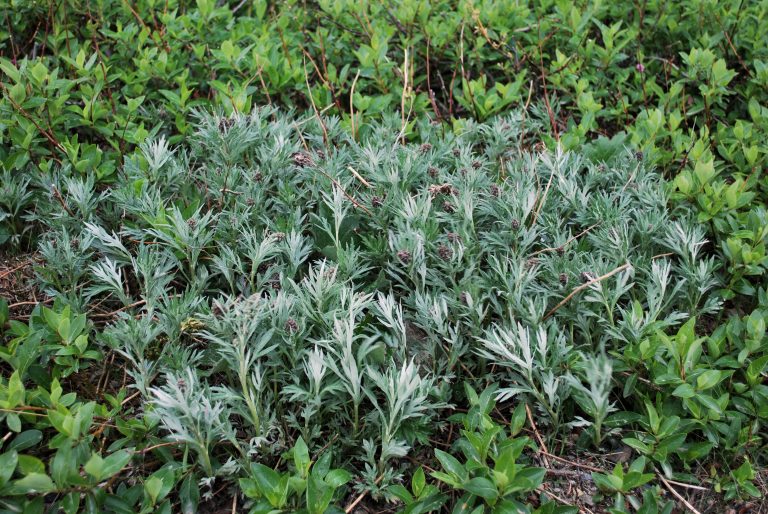Chukchi: тыкевъай (tykev’ay)
Naukan: сāйхы (saayyge)
Central Alaskan Yup’ik: caiggluk (widespread), qanganaruaq (many Kuskokwim villages), naunerrluk (lower coast)
Russian: полынь (polyn’)
English: stinkweed (common name used in Alaska), wormwood
Naukan:
Naukan people currently use the aerial parts like natural moth balls to keep insects from damaging clothing made from animal skins. Many elders said the plant was not used formerly.
Науканцы используют стебли растения как натуральное средство от моли, чтобы насекомые не испортили меховую одежду. Многие старики говорят, что раньше это растение не использовалось.
Chukchi:
Chukchi people also use the aerial parts to protect clothing and other objects made from animal skins from insect damage. Some also rub it on their own skin as mosquito repellent. On the tundra, it can also used to wipe and clean hands and dishes. In some villages of the Chukotskiy district, they hang the tops above a doorway in their house for good luck.
Чукчи используют надземные части растения для защиты одежды и других предметов, изготовленных из шкур животных, от повреждения насекомыми. Некоторые также натирают листьями полыни кожу, чтобы защититься от комаров и мошки. В тундре ей можно вытирать руки и мыть посуду. В некоторых поселках Чукотского района верхушки растения подвешивают над дверью на удачу.
Central Alaskan Yup’ik:
This is the most important medicinal species in the CAY area. The leaves and stem can be prepared and consumed many ways. They can be made into an infusion for treating colds and coughs. They are also placed in the maqi (steam house) for a similar purpose. The leaves can also be applied externally as a poultice for treating aches and pains.



